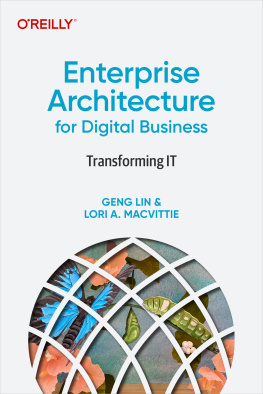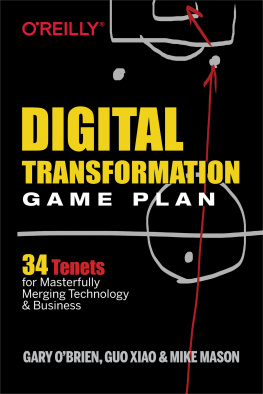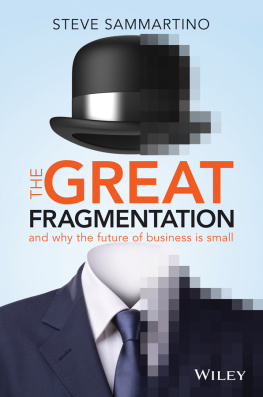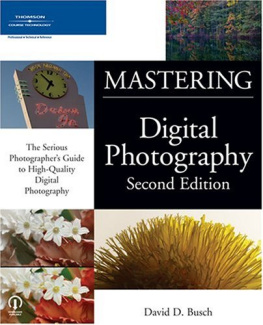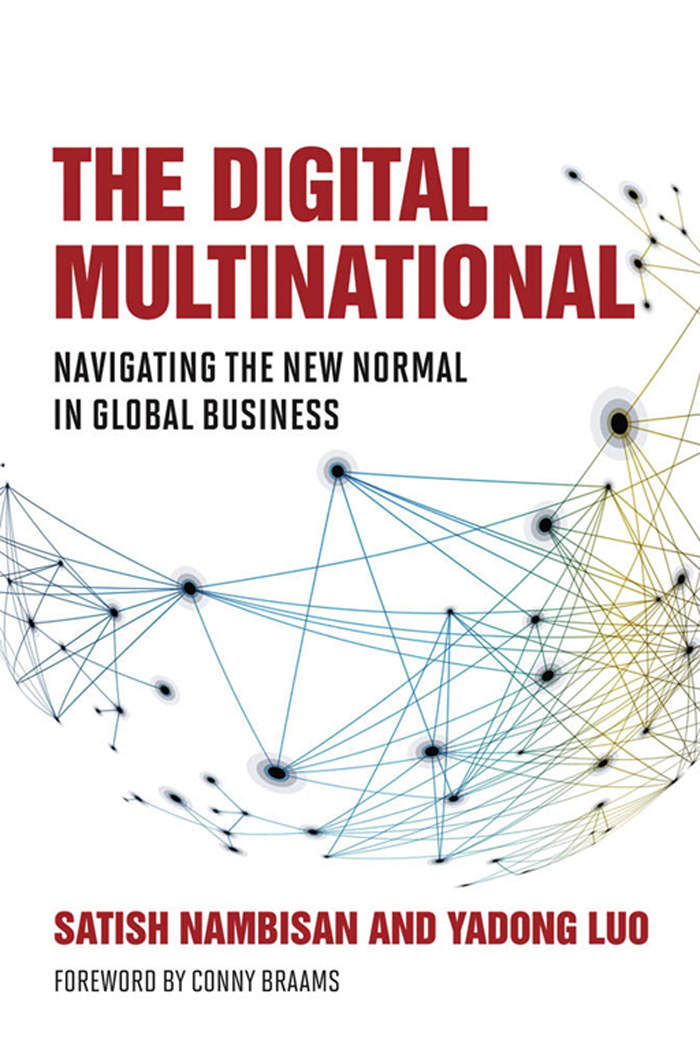
The Digital Multinational
Management on the Cutting Edge series
Robert W. Holland Jr., series editor
Published in cooperation with MIT Sloan Management Review
The AI Advantage: How to Put the Artificial Intelligence Revolution to Work
Thomas H. Davenport
The Technology Fallacy: How People Are the Real Key to Digital Transformation
Gerald C. Kane, Anh Nguyen Phillips, Jonathan Copulsky, and Garth Andrus
Designed for Digital: How to Architect Your Business for Sustained Success
Jeanne W. Ross, Cynthia Beath, and Martin Mocker
See Sooner, Act Faster: How Vigilant Leaders Thrive in an Era of Digital Turbulence
George S. Day and Paul J. H. Schoemaker
Leading in the Digital World: From Productivity and Process to Creativity and Collaboration
Amit S. Mukherjee
The Ends Game: How Smart Companies Stop Selling Products and Start Delivering Value
Marco Bertini and Oded Koenigsberg
Open Strategy: Mastering Disruption from Outside the C-Suite
Christian Stadler, Julia Hautz, Kurt Matzler, and Stephan Friedrich von den Eichen
The Transformation Myth: Leading Your Organization through Uncertain Times
Gerald C. Kane, Rich Nanda, Anh Nguyen Phillips, and Jonathan R. Copulsky
Winning the Right Game: How to Disrupt, Defend, and Deliver in a Changing World
Ron Adner
The Digital Multinational: Navigating the New Normal in Global Business
Satish Nambisan and Yadong Luo

The Digital Multinational
Navigating the New Normal in Global Business
Satish Nambisan and Yadong Luo
Foreword by Conny Braams
The MIT Press
Cambridge, Massachusetts
London, England
2022 Massachusetts Institute of Technology
All rights reserved. No part of this book may be reproduced in any form by any electronic or mechanical means (including photocopying, recording, or information storage and retrieval) without permission in writing from the publisher.
The MIT Press would like to thank the anonymous peer reviewers who provided comments on drafts of this book. The generous work of academic experts is essential for establishing the authority and quality of our publications. We acknowledge with gratitude the contributions of these otherwise uncredited readers.
This book was set in ITC Stone Serif Std and ITC Stone Sans Std by New Best-set Typesetters Ltd.
Library of Congress Cataloging-in-Publication Data
Names: Nambisan, Satish, author. | Luo, Yadong, author.
Title: The digital multinational : navigating the new normal in global business / Satish Nambisan and Yadong Luo; foreword by Conny Braams.
Description: Cambridge : The MIT Press, 2022. | Series: Management on the cutting edge | Includes bibliographical references and index.
Identifiers: LCCN 2021000760 | ISBN 9780262046329 (hardcover)
Subjects: LCSH: International business enterprisesTechnological innovations. | Regionalism. | Globalization.
Classification: LCC HD2755.5 .N38 2022 | DDC 658/.054678dc23
LC record available at https://lccn.loc.gov/2021000760
10 9 8 7 6 5 4 3 2 1
d_r0
To Ashok, Bharat and PriyaSatish Nambisan
To Rosalie, Edward and JadyYadong Luo
Contents
Series Foreword
The world does not lack for management ideas. Thousands of researchers, practitioners, and other experts produce tens of thousands of articles, books, papers, posts, and podcasts each year. But only a scant few promise to truly move the needle on practice, and fewer still dare to reach into the future of what management will become. It is this rare breed of ideameaningful to practice, grounded in evidence, and built for the futurethat we seek to present in this series.
Robert W. Holland Jr.
Managing Director
MIT Sloan Management Review
Foreword
When Satish and Yadong invited me to write a foreword for this insightful book, my team and I had just presented Unilevers accelerated digital transformation strategy to the board. Timing is everything, or toeval bestaat niet, as we say in Dutch (there is no such thing as a coincidence)! A year had passed since I had been appointed to the role of chief digital and marketing officer (CDMO), a position newly created to transform Unilever into a future-fit, purpose-led digital organization at the leading edge of marketing, serving our multistakeholder model while keeping consumers front and center.
Many have asked me whether I think it is good or bad timing that I started my role just weeks before the onset of the COVID-19 pandemic, which suddenly made everything more volatile, uncertain, ambiguous, and complex. There is a strange dichotomy in the fact that though 2020 was filled with many growing and continued hardships, which had a personalized impact on everyone, at the same time, from a professional perspective, the pace of change, the acceleration of existing trends, and the creation of new ones filled me with energy, focus, and a clear sense of direction.
After instinctively putting the safety of our people first, we then carefully considered the key trends that are likely to shape consumer priorities and behaviors in the future normal and, in turn, our strategies and practices to add value in the market. Two such trends are worth pointing out: the e-commerce boom and the rise of the cautious and conscious consumer. These trends did not originate due to the pandemic; rather, the pandemic accelerated what has already been happening for some time now.
With greater numbers of consumers preferring to shop online globally, e-commerce rapidly accelerated by over 60 percent year on year for Unilever. I fully expect this consumer behavior to keep growing in trend, giving rise to new market opportunitiesfrom pure digital plays to omnichannel strategies, both requiring greater levels of innovation in product and brand offerings, not to mention higher consumer expectations for brand experiences online. We are already witnessing a surge in data-driven marketing to meet new and more personalized demands. It is also clear that the rise of e-commerce demands more operational flexibility at all levels of an organizationfor example, supply chains that can accommodate smaller minimum order quantities, more frequent runs, and more bundling, or innovations needing higher value density, leading to further concentration in, say, home care products. Thus, e-commerce calls for end-to-end digital strategies that incorporate not just marketing and sales but also R&D, supply chain, analytics, and factory operations. This only strengthens the imperative to build a truly digital organization.
The second trend of a more conscious and considerate consumer increases the emphasis on the dual nature of value. In times of uncertainty, people often choose brands they trust, for both their value and their values. Value in terms of offering the right value equation and remaining affordable, and values in the sense of having a point of view that drives action on matters people truly care about. Brands are now expected to be active partners in serving both consumer and societal needs, and businesses are trusted to do so. The 2021 Edelman Trust Barometer revealed that business is the only institution deemed competent and ethical, while trust in other institutions, like governments and media, is down. It is therefore the responsibility of business to rise to the occasion and live up to the trust instilled in us by the people who buy our products.
Next page

